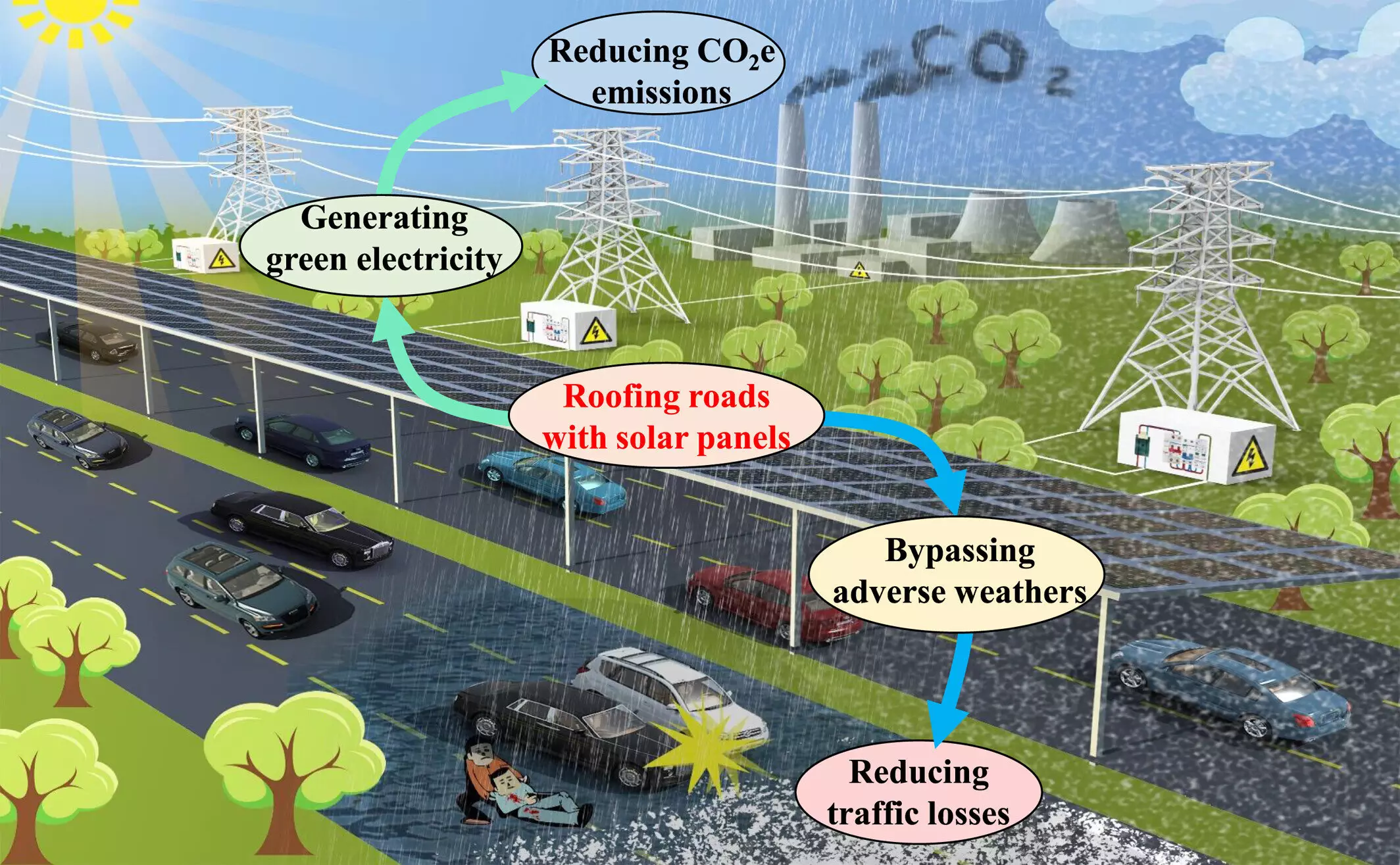As an innovative solution to two pressing global challenges—climate change and road safety—recent research proposes covering the extensive network of highways with solar panel roofs. The implications of such a transformation are astonishing: a reported reduction in carbon dioxide emissions by up to 28%, along with a significant potential decrease in traffic incidents. The study, featured in “Earth’s Future,” lays out a forecast where the world could seamlessly transition to solar energy while optimizing the use of existing infrastructures.
Ling Yao, the lead author of the study and a remote sensing scientist at the Chinese Academy of Sciences, describes the concept as a groundbreaking redesign of our highways. “Solar roofs over highways could generate about 17.58 petawatt hours of electricity annually,” Yao stated, a figure equivalent to more than 60% of global electricity consumption in 2023. This ambitious vision arises from an encounter during Yao’s daily commute, where he envisioned highways transformed into an interconnected network of solar energy generation.
With over 3.2 million kilometers (1.9 million miles) of highways crisscrossing the globe, the opportunity to generate renewable energy from roadways is both timely and urgent. The researchers explored the feasibility of solar roofs over highways, calculating the necessary costs and benefits based on using 250-watt polysilicon photovoltaic panels. The initial calculations indicate that implementing solar panels on these thoroughfares would deploy an unprecedented 52.3 billion solar panels globally.
The significance of this proposal resonates with the global push to achieve the International Panel on Climate Change’s target of limiting global warming to 1.5 degrees Celsius. As solar panels accounted for 40% of new renewable installations from 2012 to 2021, the pressing need for innovative projects like highway solar panels is clearer than ever. By repurposing existing, previously developed land, the proposed solar roofs would minimize the demand for energy derived from greenhouse gas-emitting sources.
Beyond the substantial energy production, a notable aspect of this project is the safety implications. Yao’s research estimates that the implementation of photovoltaic roofs could lead to a 10.8% decrease in road fatalities globally, particularly beneficial in regions plagued by heavy precipitation. By shielding drivers and roads from adverse weather conditions, the highway roofs would create safer travel environments, resulting in fewer accidents and associated costs.
Another critical dimension highlighted by this concept is the potential for significant reduction in greenhouse gas emissions. Yao’s study suggests that by replacing fossil fuels, the highway solar roofs could eliminate up to 9.66 gigatons of carbon dioxide annually. Such a change would be monumental, equating to approximately two-thirds of the greenhouse gas emissions produced in the U.S. in 2022.
Even as the vision of solar highways illustrates immense potential, realizing this dream will inevitably encounter hurdles. Foremost among these are the financial considerations: the cost of constructing solar roofs could be up to four times greater than similar ground installations. Additionally, maintenance presents its own set of challenges; managing the upkeep of billions of solar panels necessitates robust logistical systems and solutions.
Yet, Yao remains optimistic. Despite the challenges, he emphasizes the importance of pilot programs. He believes that practical demonstrations of the technology can dispel skepticism and encourage more widespread adoption. Ideally, these solar roofs would find their most successful implementations on expansive and flat highway structures, such as those prevalent in the southwestern United States.
The concept of solar panel roofs on highways poses a transformative approach to both energy generation and road safety, urging society to reexamine how infrastructure can play a pivotal role in addressing environmental and safety concerns. The vision laid out by Yao and his colleagues not only exemplifies innovation but also reflects a necessary evolution in our energy paradigms. As the urgency to combat climate change intensifies, projects such as highway solar roofs may illuminate the path toward a sustainable and secure future—one in which our daily routes contribute to a greener planet and safer travels. Embracing such pioneering ideas could be the key to turning the tide in favor of both renewable energy and traffic safety.


Leave a Reply